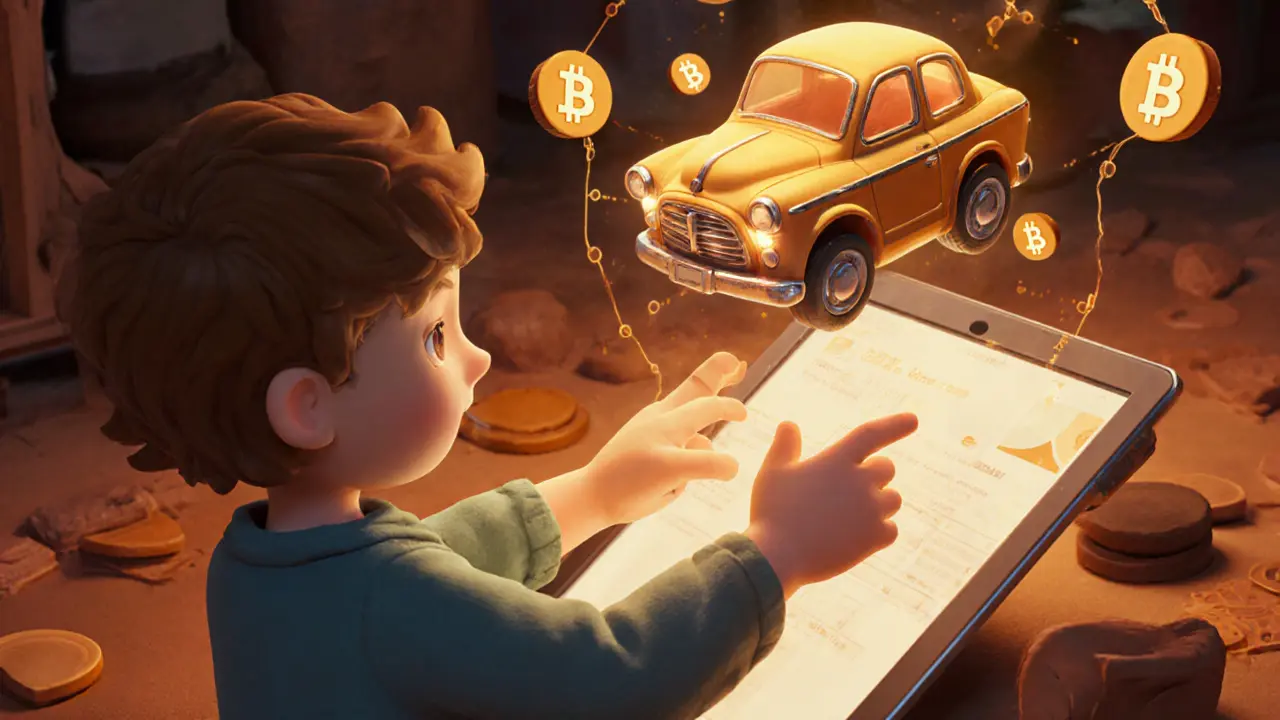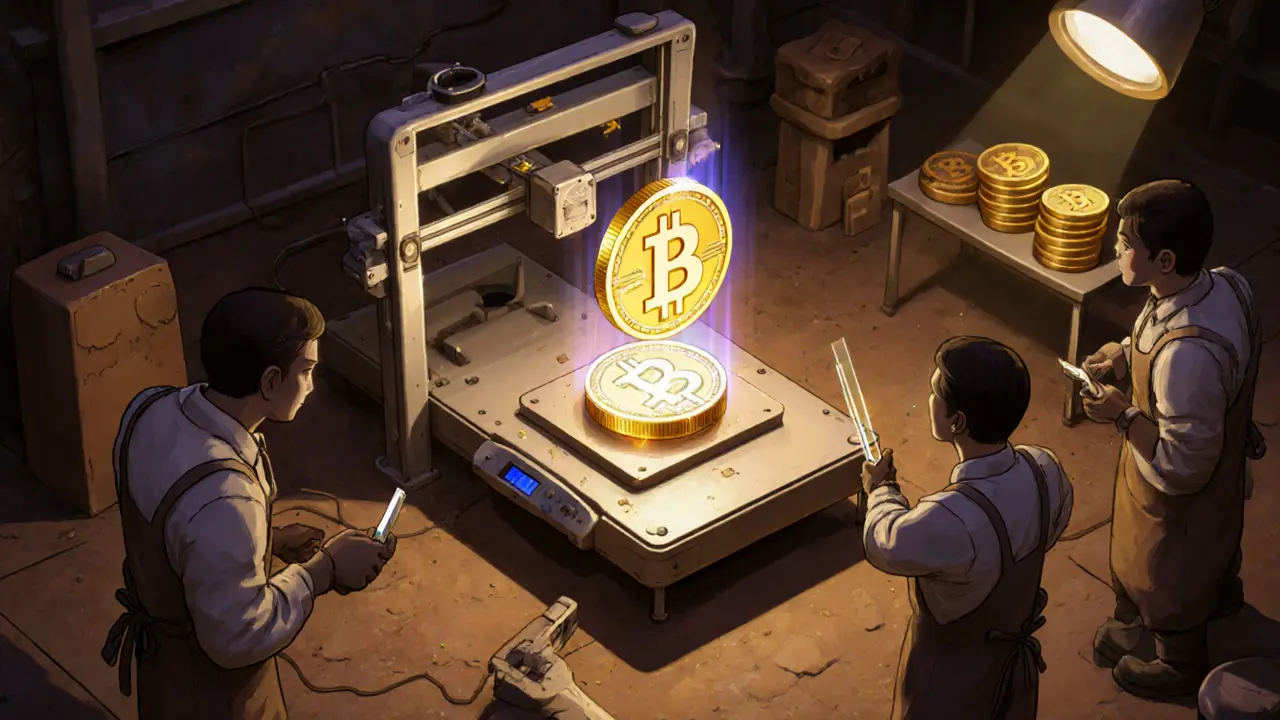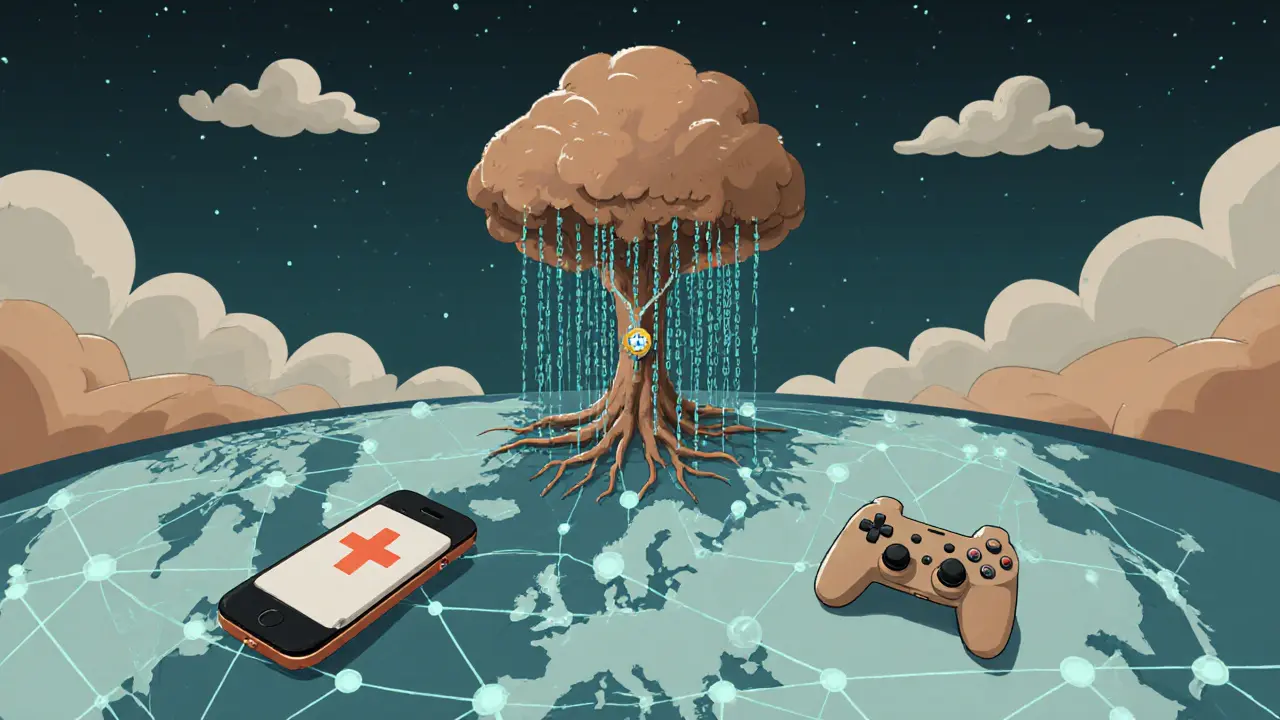What is 3DPass (P3D) crypto coin? A deep look at the 3D object tokenization blockchain
 Dec, 27 2024
Dec, 27 2024
P3D Token Value Calculator
Current P3D price: $0.00093 USD (as of November 2025)
Convert P3D to USD
Convert USD to P3D
Results
Enter a value to see your calculation results here
Most cryptocurrencies are built around money, contracts, or decentralized apps. But 3DPass (P3D) is different. It’s not just another altcoin trying to beat Bitcoin or Ethereum. It’s trying to turn real-world 3D objects into digital assets you can own, trade, and verify on a blockchain. Think of it like this: what if your favorite toy, a piece of jewelry, or even your car key could become a unique digital token you control forever? That’s the core idea behind 3DPass.
What exactly is 3DPass (P3D)?
3DPass, or P3D, is a Layer 1 blockchain built specifically for tokenizing physical objects using 3D scanning technology. Unlike Bitcoin or Ethereum, which focus on financial transactions or smart contracts, 3DPass lets you turn a 3D model of a real object into a unique, verifiable digital asset. This system is called The Ledger of Things. It’s not about replacing money-it’s about giving physical items a digital twin that lives on the blockchain.
The native token, P3D, is used to pay for transactions, access tools on the platform, and reward users who help verify or upload 3D object data. The platform doesn’t just store files-it creates a permanent, tamper-proof record of an object’s digital form, ownership history, and authenticity. This means if you scan your vintage watch and turn it into a P3D token, no one else can claim it’s theirs. The blockchain holds the proof.
How does 3DPass turn objects into crypto?
The process starts with a 3D scan. You use a smartphone app or a 3D scanner to capture the shape, texture, and dimensions of an object. That scan gets uploaded to the 3DPass network, where it’s converted into a unique digital signature. This signature becomes the token’s foundation. Once it’s on the blockchain, you can:
- Transfer ownership to someone else
- Use it as collateral in a loan
- Link it to a digital identity using biometrics (like your fingerprint or face scan)
- Prove it’s real in a marketplace without needing a certificate or appraiser
What makes this powerful is that the 3D model isn’t just a picture. It’s a full digital replica with measurable data. If someone tries to fake the object later, the blockchain can compare the real-world scan to the stored version and spot differences. This isn’t theory-it’s built into the protocol.
Who’s using 3DPass right now?
Real-world use cases are already emerging, even if the token price is volatile:
- Digital art and collectibles: Artists are tokenizing 3D sculptures, figurines, and installations. Buyers get a verifiable digital copy and proof of originality.
- Gaming assets: Game developers are using P3D to let players own, trade, or rent in-game weapons, vehicles, or characters as 3D tokens-no platform restrictions.
- Supply chain tracking: Manufacturers scan parts like engines or medical devices. Each scan becomes a token, so anyone in the chain can verify the part’s origin and history.
- Secure identity: Combining a 3D scan of a physical ID card with a biometric match (like your face) creates a fraud-resistant digital ID.
These aren’t hypotheticals. Companies in Europe and Asia are testing these applications. The tech works. The question is whether enough people will adopt it to make the token valuable.

Tokenomics: Supply, price, and market data
As of November 2025, here’s what the numbers look like:
- Circulating supply: 518,913,164 P3D
- Total supply: 797,738,942 P3D
- Max supply: 1,000,000,000 P3D
- Current price: ~$0.00093 USD
- Market cap: $434,000-$576,500
- Fully diluted valuation: $886,300
- 24-hour trading volume: $12,300-$22,500
- Trading pairs: P3D/USDT (main), P3D/BTC
- Exchanges: CoinEx, MEXC, XeggeX
3DPass hit an all-time high of $0.0432 in early 2024. Since then, it’s dropped about 97.4%. That’s extreme volatility-typical for small-cap crypto projects. The 24-hour volume has jumped by over 135% recently, which suggests renewed interest, but absolute numbers are still tiny compared to major coins. Trading on CoinEx accounts for over half of all volume.
Why is 3DPass so cheap now?
It’s not because the tech is broken. It’s because adoption is still early. Most people don’t know what 3D object tokenization means. There’s no big marketing push. No celebrity endorsements. No major exchange listing yet. The project is technically sound, but it’s operating in a niche.
Compare it to Ethereum in 2015. The tech was revolutionary, but the price was pennies. It took years for developers, users, and businesses to catch on. 3DPass is at a similar stage. The infrastructure is live. The code is open-source on GitHub. The use cases are real. But the market hasn’t caught up yet.
Also, the crypto market as a whole has been rough in 2025. Small tokens with low liquidity get crushed first. P3D’s market cap is under $600K-it’s ranked #1890 out of thousands of coins. That makes it easy to manipulate and hard to trade in large amounts without moving the price.
Where can you buy P3D?
You can’t buy P3D on Coinbase, Binance, or Kraken. It’s only available on three smaller exchanges:
- CoinEx: P3D/USDT and P3D/BTC pairs. Highest volume.
- MEXC: P3D/USDT. Moderate volume.
- XeggeX: P3D/USDT. Price is slightly higher, but volume is near zero.
To buy P3D, you need to first get USDT or BTC on a major exchange, then transfer it to one of these platforms. From there, you can trade for P3D. Be careful-low liquidity means wide bid-ask spreads. You might pay more than the listed price when buying, and get less when selling.

Is 3DPass a scam?
No, it’s not a scam. The code is public on GitHub. The team has been active in updates. The platform has real users and use cases. There’s no evidence of rug pulls or fake teams.
But it’s high-risk. The token’s value is tied to the adoption of a technology most people don’t understand. If no one starts using 3D object tokenization in gaming, art, or supply chains, P3D could fade into obscurity. It’s not a get-rich-quick play. It’s a long-term bet on a new way to link physical and digital ownership.
What’s next for 3DPass?
The roadmap isn’t flashy, but it’s focused:
- Improving the 3D scanning app for mobile devices
- Partnering with 3D printer manufacturers to embed tokenization at the source
- Building developer tools for game studios to integrate P3D assets
- Applying for listings on larger exchanges (no timeline announced)
The team is small but technical. They’re not chasing hype. They’re building tools for developers and creators who want to own their digital-physical hybrids. If they succeed, P3D could become the backbone of a new asset class. If they don’t, it’ll be a footnote in crypto history.
Should you invest in P3D?
Only if you understand the tech and are okay with extreme risk. Don’t invest money you can’t afford to lose. This isn’t a stock. It’s a bet on a future that might never fully arrive.
If you’re a 3D artist, game developer, or supply chain professional-try the platform. Upload a scan. See how it works. Play with the tools. That’s the best way to understand if this has real value.
If you’re just looking to flip a coin? Look elsewhere. 3DPass isn’t for gamblers. It’s for builders.
What is 3DPass (P3D) used for?
3DPass (P3D) is used to turn real-world 3D objects into verifiable digital assets on a blockchain. It’s used for digital art, gaming items, supply chain tracking, and secure identity verification by linking physical objects to their digital twins.
Can I buy 3DPass on Coinbase or Binance?
No, 3DPass (P3D) is not listed on Coinbase, Binance, or other major exchanges. You can only buy it on smaller platforms like CoinEx, MEXC, and XeggeX using USDT or BTC.
Is 3DPass a good investment?
It’s high-risk and speculative. The token price has dropped over 97% from its peak, and trading volume is low. It’s only worth considering if you believe in 3D object tokenization as a future industry and are comfortable with potential total loss.
How does 3DPass verify physical objects?
Users scan an object using a smartphone or 3D scanner. The scan is converted into a unique digital signature stored on the blockchain. Any future attempt to replicate or fake the object can be compared against this original scan for verification.
What is the total supply of P3D tokens?
The maximum supply of P3D tokens is capped at 1 billion. As of November 2025, about 519 million are in circulation, with 798 million already issued.
Where can I find the official 3DPass website?
The official website is 3dpass.org. The team also maintains an active GitHub repository at github.com/3Dpass and social media profiles on Twitter (@3Dpass_genesis) and Facebook.
Kristi Malicsi
November 28, 2025 AT 01:31Imagine your childhood teddy bear has a blockchain ID now